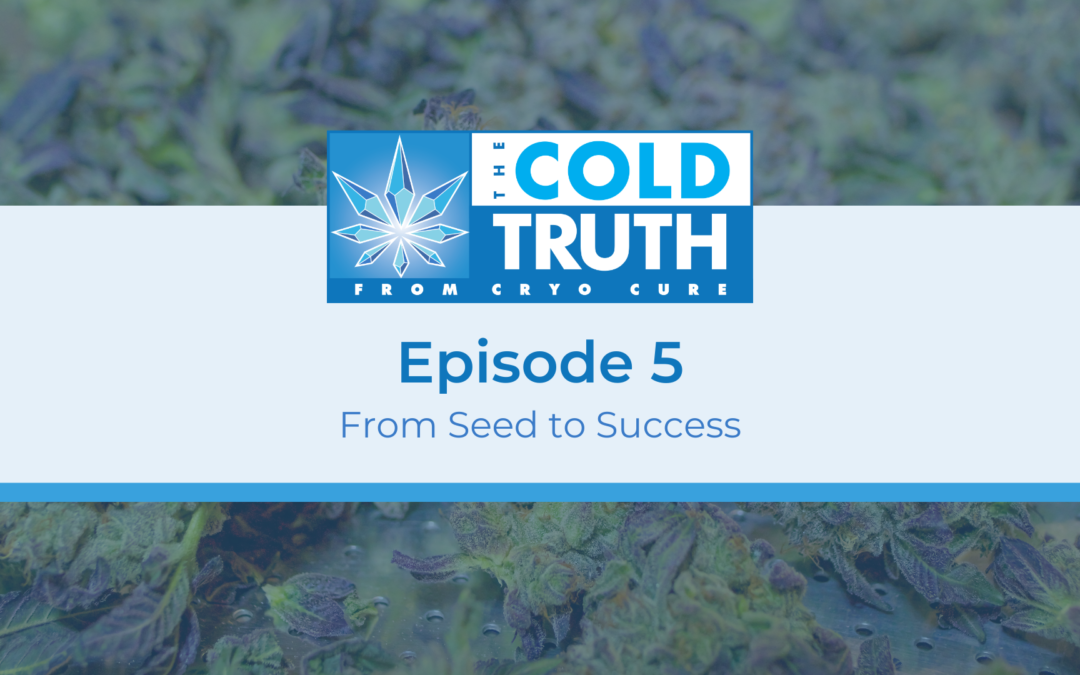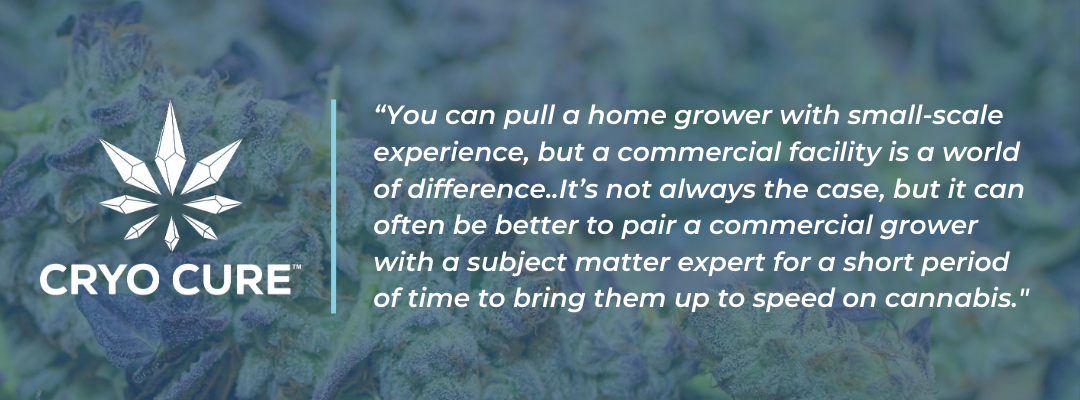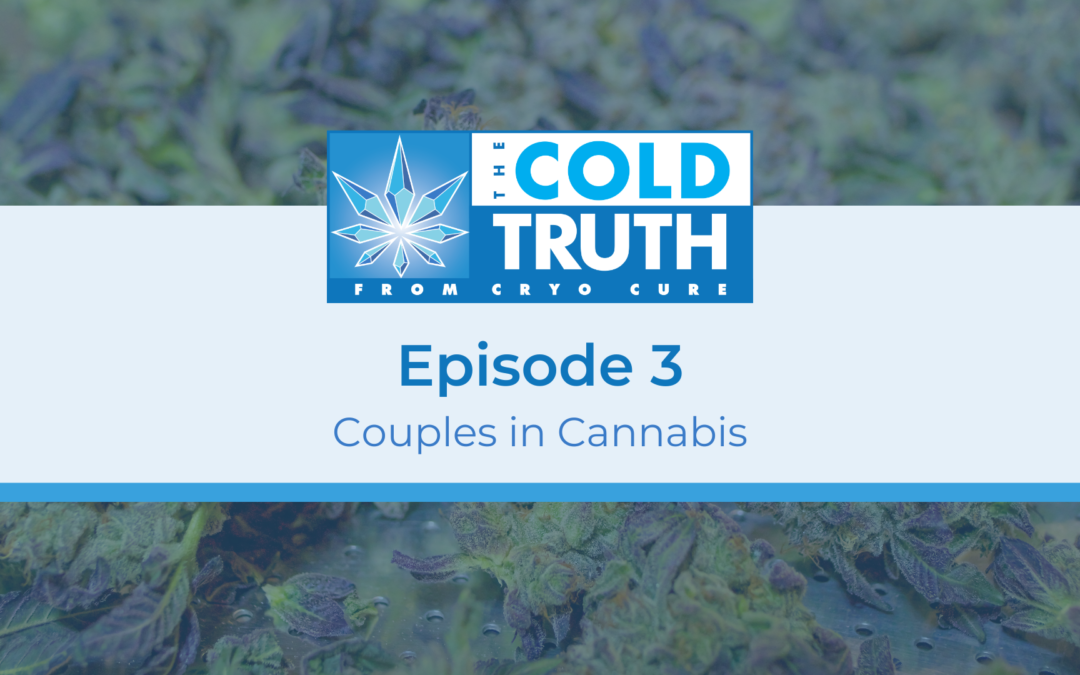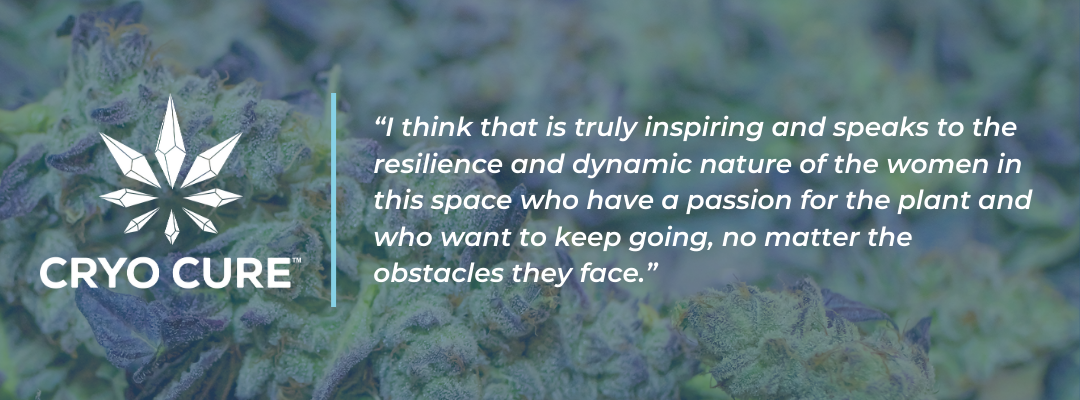
The Cold Truth Episode 5: Cultivating Success with Ryan Douglas
For the January 2023 episode drop of The Cold Truth, Cyro Cure President Greg Baughman and CEO Tracee McAfee sat down with cultivation consultant Ryan Douglas. This conversation covers a wide span of cannabis industry cultivation trends and how companies can capitalize on them to achieve success. Read a quick summary of that conversation below, watch the full interview on YouTube, or download this podcast episode from platforms like Spotify and Google Podcasts.
Assessing cannabis industry challenges
For the last five years, Douglas has worked as an independent cannabis cultivation consultant internationally, helping operations run more profitable cultivation sites. Previously, Douglas led cultivation Tweed Inc., one of the largest cannabis producers in Canada under the Canopy Growth umbrella. There, he developed and launched the company’s cultivation program.
Douglas spoke to Greg and Tracee on the podcast about how success for cultivators is tied to the basic economic principle of supply and demand. As cultivation capacity ramps up in legal markets and more cannabis becomes available, product prices go down.
“While this is beneficial for the consumer, it can be anxiety-inducing for business owners,” Douglas said. “More mature states have either flatlined or [have] slightly decreased overall sales. I think we will continue to see that overall trend, but it’s not going to fall off a cliff,” he continued.
Douglas did, however, note excitement and economic opportunity in states initiating medical or adult-use programs for the first time.
Overcoming hurdles in cannabis cultivation
As a consultant, Douglas brings a fresh perspective from assessing common issues and implementing cutting-edge techniques like data-driven growing. The lessons he’s learned by working with a wide range of cannabis companies give him deep insight into the state of the industry and where it’s going next.
“While people working seven days a week can lose sight,” Douglas says, “For an outsider, it typically takes about 20 minutes for red flags to present themselves.”
In terms of improvement, Douglas focused on two key areas. First, be sure of what it costs to produce a pound of cannabis. Second, turn to technologies and airtight processes to increase efficiencies that help keep those costs at bay.
For growers who have focused on both these areas but still struggle to stand out, Douglas advises supplementing revenue with products and services other than flower.
“There are a number of ancillary businesses that are of tremendous benefit to growers and in great demand – things like young plant producers, culture services, and diagnostic lab services,” he said.
Finding the next big thing
Douglas shared on the podcast that he expects to see a transition from indoor cultivation to greenhouse cultivation in states where production is saturated.
“I think it’s going to become more and more competitive growing indoors,” Douglas explained. “Regardless of how efficient these lights are, [indoor grows] require a lot of HVAC and dehumidification – both of which run on energy,” Douglas continued. “If you have the right greenhouse and grower, you can maintain good quality.”
Further, as new companies come online and existing companies expand, Douglas expects that they will turn to greenhouses to offset the carbon footprint of their indoor facilities.
How GMP affects the grow
Good Manufacturing Practices (GMP) are quality standards established with the goals of creating a consistent product and guaranteeing consumer safety in mind. Because cannabis is not federally legal in the U.S., no federal agency enforces these rules or requires GMP certification for the cultivation portion of a business. The result is drastic variation in the standards of cultivation sites.
As federal legalization inches closer, Douglas noted that the companies that voluntarily implement some kind of quality management system would already be in the best position to succeed in the future.
“Pick one, stick with it, and you’ll be in a much better situation when federal legalization comes into play,” he says. “It’s easier to tweak than to start from scratch.”
It’s generally accepted that GMP standards are eventually coming to the cannabis industry, and getting ahead of the game with an effective quality assurance program today could be key to attaining a competitive advantage tomorrow.
The biggest myth of cultivation
As someone with a background and training in traditional horticulture, Douglas says the biggest misconception in cultivation is that cannabis is entirely different from any other crop out there.
“I was growing ornamental crops and hydroponic vegetables in a greenhouse for a decade and a half before I transitioned to cannabis,” he said. “I’ve got a unique perspective in that I’ve grown flowers, vegetables, and cannabis on a commercial scale. In my opinion, 80 to 90% of the production principles of growing flowers and vegetables apply directly to cannabis.”
According to Douglas, hiring someone with commercial cultivation facility experience of any kind might be more beneficial than someone with strictly cannabis experience.
“You can pull a home grower with small-scale experience, but a commercial facility is a world of difference,” he said. “It’s not always the case, but it can often be better to pair a commercial grower with a subject matter expert for a short period of time to bring them up to speed on cannabis.”

Go from seed to success with Ryan Douglas
If you’re interested in learning more about cultivation from Ryan Douglas, Tracee describes his book From Seed to Success as “a Bible for anyone considering getting into cannabis cultivation” that also offers actionable advice for experienced growers.
With his first book about starting a cultivation business, Douglas also teased the possibility of a second book on optimizing grow operations.
“2023 is going to be the year of optimization,” he said. “The most successful businesses are going to be the ones that are the most efficient and can really dial in their operations.”
You can listen to the full episode with Ryan Douglas by clicking here.
Read the recaps of previous Cold Truth episodes:
- Talking Cannabis Compliance with Heidi Teutsch
- Couples in Cannabis with Mary Palmer CBD
- Cultivation Legends with Daniel Vinkovetsky (f/k/a/ High Times’ Danny Danko)
- Women in Cannabis, with Women In Cannabis Study founder Jennifer Whetzel and partner Rachelle Gordon










